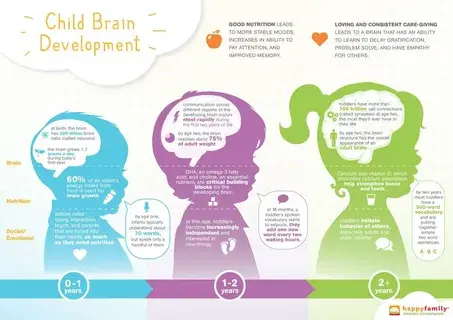Contents
- 1 Supporting Your Toddler’s Speech Development: Techniques and Activities for Home
- 1.0.1 Typical Speech Development Timeline
- 1.0.2 Signs of Potential Speech or Language Delays
- 1.0.3 Speech Therapy Techniques and Activities for Home
- 1.0.4 Read Together
- 1.0.5 Narrate Your Day
- 1.0.6 Sing Songs and Nursery Rhymes
- 1.0.7 Give Choices
- 1.0.8 Ask Open-Ended Questions
- 1.0.9 Describe What They’re Doing
- 1.0.10 Encourage Imitation
- 1.0.11 Use Gestures and Sign Language
- 1.0.12 Prompt Sounds and Words
- 1.0.13 Sabotage Routines
- 1.0.14 Introduce New Vocabulary
- 1.0.15 Break Down Instructions
- 1.0.16 When to Seek Professional Speech Therapy
Supporting Your Toddler’s Speech Development: Techniques and Activities for Home
As children grow in their first few years of life, one of the most exciting milestones is when they begin talking. From a parent’s perspective, hearing your toddler’s first words and watching them develop and language skills is incredibly rewarding. However, having some worries or questions about your child’s communication development is also normal.
We recognize the importance of early detection for speech or language delays. The dedicated team at Speech Pathology has provided an in-depth guide on detecting these early signs with measures you can take at home to make it a more supportive environment for your toddler. You can check their website for more information regarding this.
Typical Speech Development Timeline
To determine if your toddler’s speech is developing typically, it’s helpful to know general expectations and milestones. According to speech-language pathologists, here is an overview of speech development in children under three years old:
- 0-12 Months: At this stage, babies communicate through cries, coos, babbling, and gestures. They are listening and absorbing a tremendous amount of language.
- 12-18 Months: Toddlers begin using first words around their 1st birthday. Early words often include “mama” and “dada” and naming common items like “ball”. Their vocabulary expands to around 20-50 words by 18 months.
- 18-24 Months: This is often called the “language explosion” stage. Toddlers rapidly gain new words and begin combining two words in short phrases like “mama eat. ” Their vocabulary grows to about 300 words by age 2.
- 24-36 Months: At this point, children speak in short sentences of 3-4 words. Their clarity and grammar improve, and they understand simple questions and directions. Vocabulary expands to 900+ words by age 3.
Signs of Potential Speech or Language Delays
While every child develops at their own pace, certain signs could indicate the need for speech therapy or further assessment:
- Not reaching speech milestones for their age group.
- Difficulty learning and using new words
- Struggling to form words correctly
- Frustration when trying to communicate
- Others have trouble understanding them.
- Slower language processing or following directions
If you notice any warning signs, bring them up with your pediatrician. Early intervention can make a huge difference in helping toddlers catch up with speech and language goals.
Speech Therapy Techniques and Activities for Home
Whether you’re waiting to access professional speech therapy services or want to nurture your toddler’s communication abilities, there are many techniques and activities you can implement at home:
Read Together
Reading exposes children to new vocabulary and proper pronunciation. Let them turn pages and point at pictures. Name each image, speak slowly and clearly, and wait for them to repeat new words.
Narrate Your Day
Describe your daily actions and routines out loud. For example, “Mommy is washing the dishes. I’m using soap and water to clean the plate!” It exposes your toddler to a range of languages.
Sing Songs and Nursery Rhymes
Music’s melodies and rhythms engage children in language. Sing simple songs with gestures like “Twinkle, Twinkle, Little Star. ” Try nursery rhymes with motions like “Itsy Bitsy Spider. “
Give Choices
Instead of handing your toddler a snack, ask simple choice questions to prompt language, such as “Do you want apple or banana?” Praise them for responding.
Ask Open-Ended Questions
Get your toddler used to forming responses by asking open-ended questions. “What toy do you want to play with?” and wait for them to reply.
Describe What They’re Doing
Sit with your toddler during play and narrate their actions out loud. “You’re rolling the ball. Now you bounced the ball!” It associates words with their experience.
Encourage Imitation
Children learn language through modelling others. Demonstrate new vocabulary and ask your toddler to imitate how you say the words. Praise all efforts.
Use Gestures and Sign Language
When used alongside speech, gestures and signs add extra context and meaning. Try basic signs for common words like “more, ” “eat, ” “drink, ” etc.
Prompt Sounds and Words
Provide a visual cue if your toddler struggles with certain letter sounds or words. Show them a snake picture with the “sss” sound and let them repeat it.
Sabotage Routines
Leave out expected items during familiar activities like brushing teeth without toothpaste. When your toddler protests, prompt them to use words for what’s missing.
Introduce New Vocabulary
Toddlers learn best through daily routines. Introduce new words during play, meals, bath time, etc. Name each toy or food item they encounter and encourage them to repeat it.
Break Down Instructions
When giving your toddler directions, use short phrases with pauses instead of long sentences. This will allow them extra time to process and respond.
Implementing just a few of these speech-building techniques daily can significantly impact your child’s communication abilities right from home.
When to Seek Professional Speech Therapy
While nurturing speech development is important for all parents and caregivers, professional speech therapy is sometimes needed. If your toddler shows no progress in communicating or his or her speech is difficult for most people to understand by the age of three, an assessment should be done.
A speech-language pathologist can diagnose the root cause of delays, whether problems with motor planning, language processing, hearing impairment, or other factors. The specialist designs a customised treatment plan involving interactive speech therapy activities to target your child’s needs.
Seeking help sooner rather than later can improve outcomes and prevent long-term struggles. Early speech therapy gives toddlers the best chance of catching up to peers and having strong kindergarten readiness.
And also Read the https://businessnewstips.com




